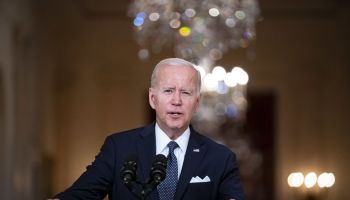COLUMBUS – When Gov. Ted Strickland walked into a meeting with a phalanx of reporters and television cameras, he joked about getting a “Christmas present.”
Well, on last Thursday morning at about 2 a.m., the governor got the most important present he probably could have gotten in this year of a Scrooge-like economic crisis: a budget deal that will preserve $851 million in funding for Ohio’s schools.
After what he admitted was a “fairly long and difficult process,” the governor and Senate Republicans finally worked out a deal where the state would delay the final year of a five-year, 21 percent income tax cut enacted in 2005. The money raised will replace funds scheduled to go to the public schools after the Ohio Supreme Court rejected the governor’s plan, enacted in the budget, to raise $850 million for the schools through allowing and licensing video lottery terminals at the state’s seven racetracks.
The final plan incorporates:
• The delay, until July, 2011, of the final 4.2 percent cut in the state income tax;
• Approval of three “demonstration projects” – one large; one medium-sized, and one small – to test a change in the way Ohio awards construction projects. Rather than awarding multiple prime contracts on construction projects, the state will award one “design-build” contract per project; and
• Make it easier for school districts to receive a waiver from the state’s requirements for all-day, all-year kindergarten, which is scheduled to go into effect in the 2010-11 school year; and
• The possibility of additional funding for non-public charter schools.
The plan, which passed the Ohio Senate on Thursday by a 17-16 margin and the House by 54-42, “will accomplish what needed to be accomplished to protect education, produce a balanced budget and bring this issue to closure,” said Strickland.
The governor’s plan, which he announced on September 30, was simply to delay the final year of the tax cut. That bill was passed October 21 by the Democratic-controlled Ohio House of Representatives.
But the plan was held up in the Senate, where the Republican majority resisted the proposal, which Senate President Bill Harris, R-Ashland, and several others eventually called a “tax increase.” Later, the Republicans proposed a plan which would give the governor two-thirds of the delay, and impose other budget cuts – a plan that was summarily rejected by both the governor and legislative Democrats.
More difficult to address was a Republican plan to couple the delay with the revision of the state’s 132-year-old construction law that allows multiple prime contractors on construction projects. The concept – which was backed by a panel appointed by Strickland to review the state’s construction laws – was opposed by members of the Ohio Legislative Black Caucus, who were concerned that the changes could ultimately weaken opportunities for minority contractors to get state construction contracts.
As a deadline for action of Dec. 31 loomed – the state could not delay the tax cut unless it was passed by the end of the year – negotiations become more publicly heated. Strickland expressed the fear that potentially billions of dollars in funding could be endangered.
Read full story.
Article courtesy of: cleveland.com
















